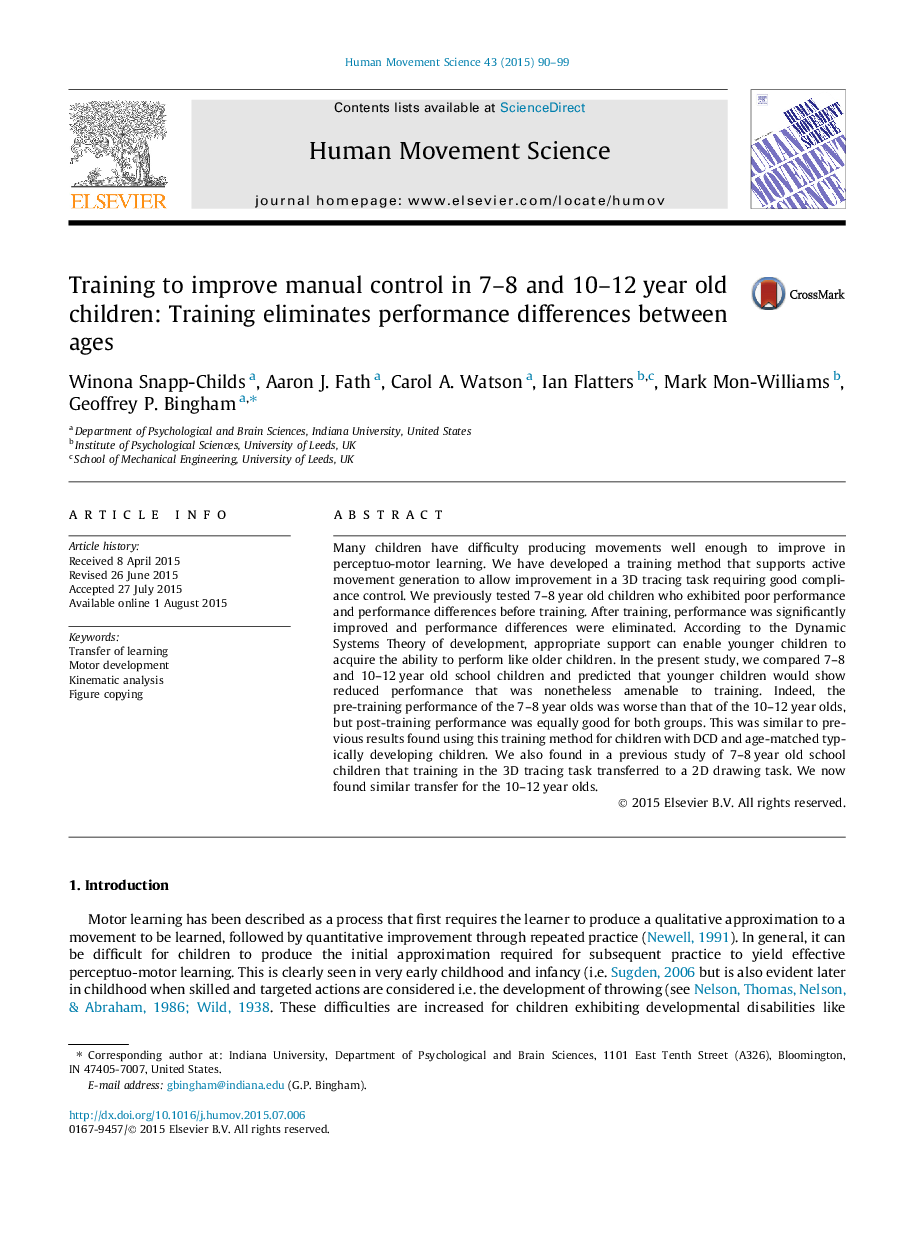| Article ID | Journal | Published Year | Pages | File Type |
|---|---|---|---|---|
| 928266 | Human Movement Science | 2015 | 10 Pages |
Many children have difficulty producing movements well enough to improve in perceptuo-motor learning. We have developed a training method that supports active movement generation to allow improvement in a 3D tracing task requiring good compliance control. We previously tested 7–8 year old children who exhibited poor performance and performance differences before training. After training, performance was significantly improved and performance differences were eliminated. According to the Dynamic Systems Theory of development, appropriate support can enable younger children to acquire the ability to perform like older children. In the present study, we compared 7–8 and 10–12 year old school children and predicted that younger children would show reduced performance that was nonetheless amenable to training. Indeed, the pre-training performance of the 7–8 year olds was worse than that of the 10–12 year olds, but post-training performance was equally good for both groups. This was similar to previous results found using this training method for children with DCD and age-matched typically developing children. We also found in a previous study of 7–8 year old school children that training in the 3D tracing task transferred to a 2D drawing task. We now found similar transfer for the 10–12 year olds.
